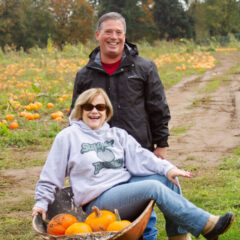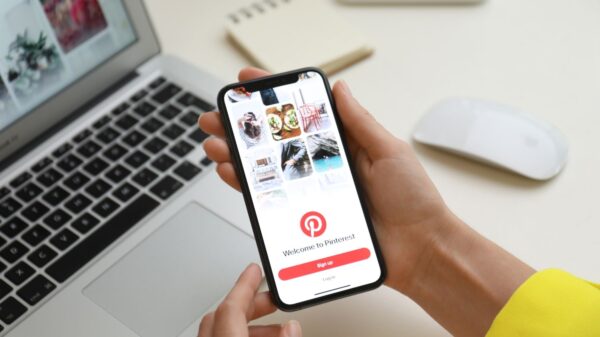Affiliate marketing on Pinterest can be a clever way to earn money while sharing content you genuinely care about. Pinterest, unlike most other social networks, acts more like a visual search engine. People come to Pinterest looking for inspiration, ideas, and things to buy. If you’re smart, you can place your affiliate links right where they’re the most helpful. This turns casual browsers into buyers.
How Affiliate Marketing Works on Pinterest
Pinterest is packed with users searching for products, guides, and cool ideas. Each pin can send visitors to an outside website, making it an excellent place to share affiliate content. When someone clicks your pin and buys something through your affiliate link, you earn a commission. The key is making your pins useful and relevant for what people are searching for so it never feels spammy or forced.
I’ve seen countless success stories of regular people turning their Pinterest boards into a steady stream of passive income. Boards that focus on home décor, wellness, recipes, and fashion do especially well. Basically, if people are searching for it on Pinterest, it has potential for affiliate marketing.
Pick a Niche That Actually Interests You
Choosing a niche that genuinely excites you makes the whole process easier and more enjoyable. When your boards and pins reflect real enthusiasm, people are more likely to trust your suggestions. I’ve tried creating pins in different topics just to give it a shot, but only the ones I was passionate about kept me coming back to pin regularly and reply to comments.
Some good topics to consider include:
- Home organization and decorating: People are always tracking down clever storage or decor tips.
- Fitness routines and wellness: Workout gear and supplements often get plenty of clicks.
- DIY and crafts: Perfect for pointing users to supply sites and step-by-step guides.
- Recipes and kitchen gadgets: Folks love finding new kitchen tools and creative recipe ideas.
The more you narrow your focus, the easier it is to become a go-to trusted source. For instance, “plant based keto meal ideas” stands out a lot more than just “recipes.” If your niche is something you truly enjoy, you’ll naturally create better content and connect more with your audience.
Competitor Analysis: See What’s Working for Others
Checking out what top-performing accounts in your niche are up to can give you some real insight. Search your niche keywords on Pinterest and pay attention to the most popular accounts. Notice their pin styles, how they word descriptions, and which affiliate products show up again and again. This kind of research helps you figure out what’s clicking with viewers.
- How often are they posting?
- What types of images do they use—photos, infographics, or illustrations?
- Which brands or affiliate programs show up the most?
I like to save some competitor pins that really pop so I can look closely at color schemes and caption tricks later. This keeps me inspired and helps me plan pins that’ll fit what’s getting attention in my niche.
Interest-Based Search: Track Down Pinterest Trends
Pinterest Trends (enter “Pinterest Trends” in Google or visit trends.pinterest.com) is a brilliant tool for seeing what’s trending right now. Search for a keyword related to your niche to spot when search spikes happen throughout the year. For example, “outdoor furniture” or “meal prep” might get extra popular at different times. Make a note of these seasonal patterns and plan your affiliate pins around them.
The Pinterest search bar is another great source. As you type, you’ll see trending phrases pop up automatically. These suggestions are both keyword ideas and an exact snapshot of what users want to see. I keep a list of these keywords and work them naturally into pin titles and descriptions, which helps my content reach more people.
Why Building a Website Helps Your Affiliate Strategy
Directing Pinterest traffic straight to affiliate offers is possible, but having your own website gives you more control and protection. With a site, you’re able to create detailed posts or guides, add email signup forms, and keep your affiliate links organized and secure. If Pinterest ever changes its policy or sends less traffic to direct affiliate links, you’re still in control since your site stands as your home base.
It doesn’t need to be fancy; a simple blog or even a one-page site from a builder is all you need to start. Pinterest pins can send traffic to your site, where you can present affiliate links in a real, trustworthy way. Plus, some affiliate programs require you to have a website for approval.
– Turn your own Hobby/Niche website into revenue.
– Monetize content based on your interests and goals.
– Also monetize Social Media and YouTube.
– Step by step training, tools and support. Everything you need for success.
– Your own AI powered website.
– Try it FREE to see if the program is right for you. No credit card needed.
Create a Pinterest Business Account
Switching over to a Pinterest business account gives you access to analytics tools and added features. Set up is quick and free, and you’ll immediately get tracking tools for your pins, the ability to verify your website, and more ways to make your profile unique.
When setting up, use a name and bio matching your website or blog. Keeping it all consistent builds trust with people visiting both your pins and your site. Claim your website as soon as possible—it unlocks analytics and gives your content more credibility.
Optimize Your Pinterest Profile
- Write a clear bio explaining what you pin and what people can expect.
- Add a profile image that matches your brand—maybe a logo or a recognizable photo.
- Claim your site (it’s straightforward through Pinterest) for analytics and authority.
- Organize boards with direct, keyword-rich titles and helpful descriptions. For example, “Easy Vegan Dinner Recipes” is specific, keyword-ready, and full of content users are actively searching for.
Boards without keywords in their title usually stay hidden in the search results. Make sure each board is focused on a clear topic, with a description that adds search value. That way, they show up both in Pinterest and in Google results.
Create Engaging Pins (Try Using Canva)
Using eye-catching, vertical images is the way to go; Pinterest recommends using a 2:3 aspect ratio such as 1000 x 1500 pixels. Canva is fantastic for creating standout pins. Free Pinterest templates make it easy to drop in your own images and text without much effort. Good pins should always include:
- Bold, bright colors that really stand out
- Easy-to-read text on the image
- A simple call-to-action (e.g., “Shop Now” or “See More”)
- Your website or brand logo for recognition
Well-shot photos work great for product roundups, but stepbystep graphics or infographics can pull extra traffic to how-to guides. If showing off affiliate products, display them in action—a blender making a smoothie or a planner filled out helps viewers picture real results. That approach builds trust and curiosity.
Pin Regularly for Consistent Results
Pinning on a regular schedule keeps your profile active and brings in steady viewers. I recommend pinning 3-10 new pieces daily, mixing your own pins with smart re-pins from other quality boards. Pinterest’s algorithm loves consistency, but there’s no need to overwhelm your audience. Tools like Tailwind or Pinterest’s own scheduler can help queue things up and keep your feed steady even when you’re busy.
Old pins not performing well? Updating their graphics or tweaking descriptions can give them a fresh shot at getting traction without extra effort.
How to Find Pinterest Keywords That Drive Traffic
Smart keyword research goes a long way on Pinterest. Here’s how I track down those golden traffic-driving phrases:
- Pinterest Search Bar: Enter your niche and watch what shows up in the drop-down. The autocomplete suggestions are the most searched keywords.
- Spot Trending Searches: Use Pinterest Trends or even Google Trends to pinpoint seasonal booms or rising topics worth focusing on.
- Peek at Other Pins: Click on top pins in your space and look at their descriptions, board names, and hashtags.
- Pinterest Analytics: As you grow, use your analytics dashboard to check which pins are bringing in all the clicks and saves—and which keywords those pins use.
The more keywords you naturally work into your pin titles, descriptions, and board write-ups, the more your pins will show up in front of people—in both Pinterest and Google’s search results, bringing more eyes to your content to convert into clicks and sales.
FAQ: Common Questions About Pinterest Affiliate Marketing
These are some questions I often hear about getting into affiliate marketing on Pinterest:
How do I know if an affiliate program says yes to Pinterest traffic?
Always double-check the terms of each affiliate program you join. Some, like Amazon, won’t let you direct link from Pinterest, but you can send traffic to your own website first and link from there. On the other hand, programs on networks like ShareASale or Impact often let you use Pinterest directly for traffic—just make sure you ask and read their terms.
What’s the best way to avoid being flagged as spam?
Mix up your pins with plenty of valuable, non-affiliate content. Share useful guides, fun images, and genuine resources along with your affiliate pins. This approach keeps your profile looking natural, which Pinterest’s algorithm likes.
How many affiliate links should go in each board?
There’s no strict number, but keeping a blend of affiliate and helpful, non-affiliate pins creates a viewer-friendly experience. If every pin is an affiliate post, your board will feel pushy and won’t build trust with users. A good round number is 10-20 pins per day.
Make the Most of Pinterest for Affiliate Marketing
Affiliate marketing on Pinterest really pays off if you commit to pinning with purpose and focusing on what truly interests you. Picking a tight niche, checking out successful competitors, building a strong profile, and putting out excellent pins all help you attract and serve your target audience. Regular pinning, smart keywords, and nextlevel cool visuals set you up to turn Pinterest views into commissions. As your account grows, keep exploring, keep tinkering with new styles and content, and don’t forget to have fun along the way—that’s the real key to lasting results!
Here’s a little transparency: Our website contains affiliate links. If you click and make a purchase, we may receive a small commission. Don’t worry, there’s no extra cost to you.



